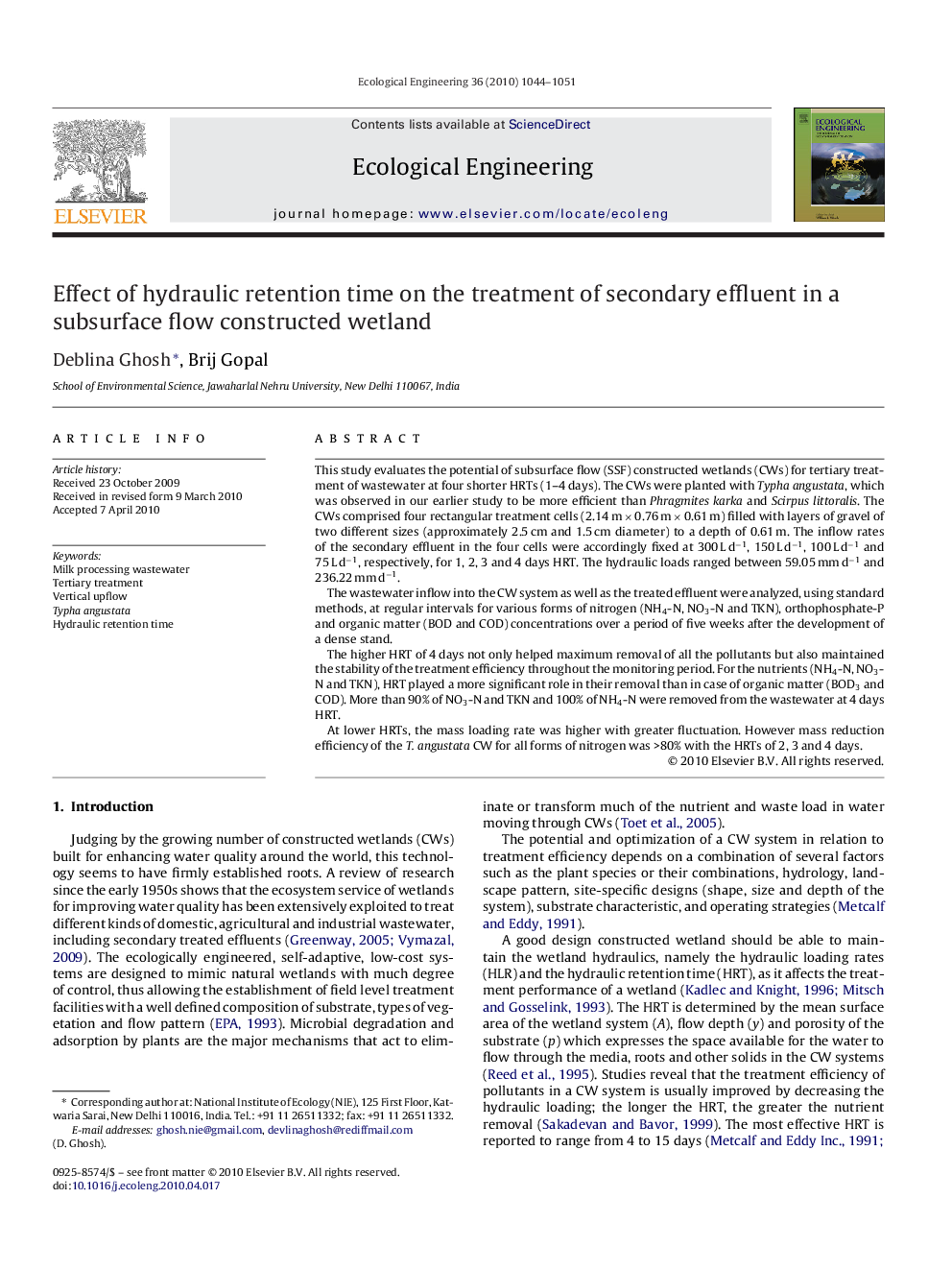| Article ID | Journal | Published Year | Pages | File Type |
|---|---|---|---|---|
| 4390360 | Ecological Engineering | 2010 | 8 Pages |
This study evaluates the potential of subsurface flow (SSF) constructed wetlands (CWs) for tertiary treatment of wastewater at four shorter HRTs (1–4 days). The CWs were planted with Typha angustata, which was observed in our earlier study to be more efficient than Phragmites karka and Scirpus littoralis. The CWs comprised four rectangular treatment cells (2.14 m × 0.76 m × 0.61 m) filled with layers of gravel of two different sizes (approximately 2.5 cm and 1.5 cm diameter) to a depth of 0.61 m. The inflow rates of the secondary effluent in the four cells were accordingly fixed at 300 L d−1, 150 L d−1, 100 L d−1 and 75 L d−1, respectively, for 1, 2, 3 and 4 days HRT. The hydraulic loads ranged between 59.05 mm d−1 and 236.22 mm d−1.The wastewater inflow into the CW system as well as the treated effluent were analyzed, using standard methods, at regular intervals for various forms of nitrogen (NH4-N, NO3-N and TKN), orthophosphate-P and organic matter (BOD and COD) concentrations over a period of five weeks after the development of a dense stand.The higher HRT of 4 days not only helped maximum removal of all the pollutants but also maintained the stability of the treatment efficiency throughout the monitoring period. For the nutrients (NH4-N, NO3-N and TKN), HRT played a more significant role in their removal than in case of organic matter (BOD3 and COD). More than 90% of NO3-N and TKN and 100% of NH4-N were removed from the wastewater at 4 days HRT.At lower HRTs, the mass loading rate was higher with greater fluctuation. However mass reduction efficiency of the T. angustata CW for all forms of nitrogen was >80% with the HRTs of 2, 3 and 4 days.
